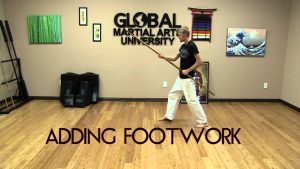Mastering Self-Defense: Exploring Krav Maga Fighting Techniques
Empower Yourself with Practical Self-Defense Skills for Real-Life Situations
In an unpredictable world where personal safety is paramount, mastering effective self-defense techniques is essential. Krav Maga, a martial art developed for practical and real-world self-defense, offers a comprehensive system of fighting techniques designed to empower individuals to protect themselves in any situation. In this guide, we’ll delve into the world of Krav Maga and explore its fundamental principles, techniques, and applications for self-defense.
Chapter 1: Understanding Krav Maga
Krav Maga, which translates to “contact combat” in Hebrew, is a self-defense system developed by the Israeli military. Unlike traditional martial arts, Krav Maga focuses on practicality and simplicity, emphasizing techniques that are easy to learn and apply under stress. In this chapter, we’ll explore the history, philosophy, and principles of Krav Maga, laying the groundwork for a deeper understanding of its fighting techniques.
Chapter 2: Basic Strikes and Defenses
At the core of Krav Maga are its basic strikes and defenses, which are designed to neutralize threats quickly and efficiently. In this chapter, we’ll explore fundamental techniques such as punches, kicks, elbows, and knees, as well as blocks, parries, and evasive maneuvers. These techniques form the foundation of Krav Maga training, preparing practitioners to defend themselves against common attacks with speed and precision.
Chapter 3: Counter-Attacks and Combatives
Krav Maga is not just about defending against attacks but also about counter-attacking with decisive force. In this chapter, we’ll delve into advanced techniques for delivering powerful counter-strikes, incapacitating opponents, and gaining the upper hand in a confrontation. From eye gouges and groin strikes to joint locks and takedowns, Krav Maga offers a wide range of combatives for neutralizing threats and escaping danger.
Chapter 4: Defenses Against Weapons
In addition to empty-hand techniques, Krav Maga teaches defenses against weapons such as knives, guns, and blunt objects. In this chapter, we’ll explore techniques for disarming attackers, controlling weapons, and escaping potentially lethal situations. By learning how to react effectively to armed threats, practitioners can increase their chances of survival and protect themselves and their loved ones from harm.
Chapter 5: Scenario-Based Training
One of the unique aspects of Krav Maga training is its emphasis on scenario-based training, where practitioners simulate real-life situations and practice their self-defense skills under realistic conditions. In this chapter, we’ll discuss the importance of scenario-based training and how it helps prepare individuals to respond effectively to the chaos and unpredictability of a physical altercation.
Conclusion:
As we conclude our exploration of Krav Maga fighting techniques, we are reminded of the importance of being prepared and empowered to defend ourselves in any situation. Whether you’re a complete beginner or an experienced martial artist, Krav Maga offers practical, effective, and proven techniques for protecting yourself and those around you. By mastering the principles and techniques of Krav Maga, you can gain confidence, enhance your personal safety, and live with greater peace of mind in an uncertain world.







